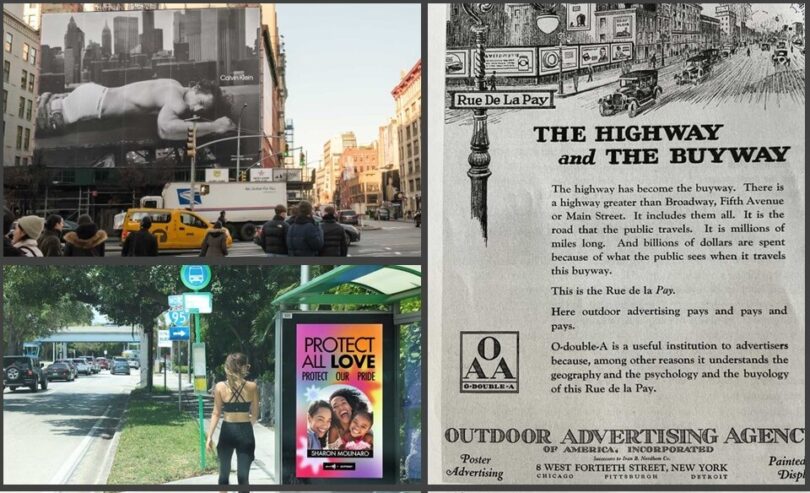Author: Sally Peay, Marketing Specialist @ OUTFRONT
With digital media dominating the industry in 2024, it’s hard to fathom how advertising from the lithography days of the 1800s might be relevant to marketers today. However, a closer look at the history of out of home advertising reveals parallels that demonstrate it’s not as far removed as one may think.
Outdoor advertising may date back as early as 3000 B.C., but let’s jump back in time a little later, to the 1830s, when Jared Bell designed the first billboards to advertise a circus. The 50-square-foot posters were made possible by the invention of lithography.
Later in the 19th century, billposters would paste small posters on surfaces on any available flat space outdoors. As modernization made it possible to print on larger areas, they were able to print larger sheets, making it easier to mount several pieces together, creating even larger posters.
The competition to post ads was fierce. Sometimes one billposter would make bigger prints to cover up those from a rival. Some billposters would put up as many as 1000 sheets per day. Today’s tactic of wildposting is directly descended from this practice.
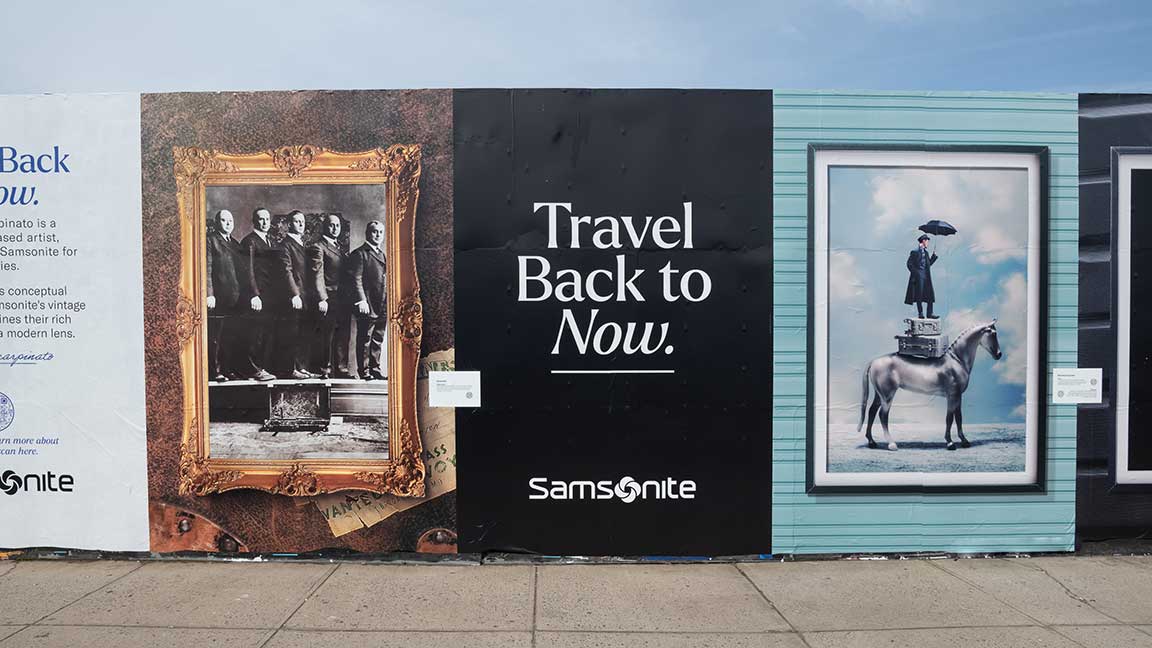
Competition may be more civil now, but it’s still competition. Today, brands who want to flood the zone can do so efficiently with digital out of home formats – especially transit media, which incidentally also began in the 1830s as streetcar conductors contracted out space.
In the 1860s, the idea of leasing space to host advertisements was born. This opened the doors to building structures specifically for advertising, while helping landowners better monetize their property. This has become customary practice in how the out of home industry functions today.

With the rising popularity of billboards, associations to advocate for outdoor advertising were founded, leading to standardization of billboard sizes. At the Paris Exposition of 1889, the 2:1 poster format we’re most familiar with today was born, as lithographers stitched together 24 sheets to form a single image.
In 1913, the Associated Bill Posters’ Association of the US and Canada – today known as the OAAA – established a committee which worked to encourage members to donate public service advertising. During World War II, billboards were used to display propaganda and support for U.S. troops. In addition to war efforts, space was used to showcase messages meant to improve the lives of everyday citizens. The practice of filling open space with public service announcements and non-profit messaging is still used now.
For example, this year OUTFRONT celebrated Pride by partnering with GLAAD with a nationwide DOOH campaign encouraging audiences to get involved. This practice can have a tremendously positive impact on our communities.
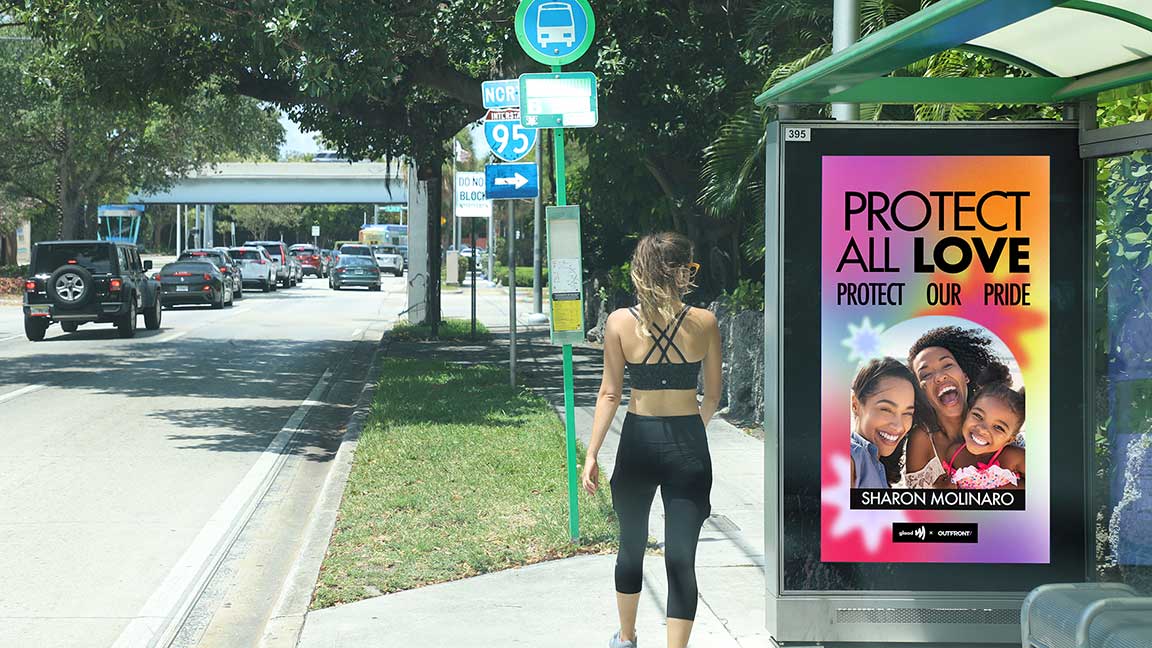
Billboards weren’t always part of our daily lives, until the birth of Ford’s Model T. The first mass-produced affordable car in America, the Model T gave Americans more freedom to travel on roadways – and more exposure to the billboards alongside those roadways. But it wasn’t until the birth of the 50,000-mile Interstate Highway System in the 1950’s that made the outdoor industry explode.
Not everyone was thrilled with the spread of billboards, but even those advocating against them used billboards to communicate their message to the public! However, when Congress passed the Highway Beautification Act in 1965, setting limitations on the number of billboards that could be placed on roadways, as well as on sizing, placement, and even lighting.
Throughout the years, some advertisers pioneered tactics still in use today, such as Burma-Shave and Calvin Klein.
A mainstay of roadside Americana, Burma-Shave billboards were placed in sets of six, spaced 100 feet apart with rhyming copy. At its peak Burma-Shave had over 7,000 signs along highways in 45 states. We pay homage by calling a series of sequential billboards a Burma-Shave, and brands are still using them today to better tell their story and engage their audience.
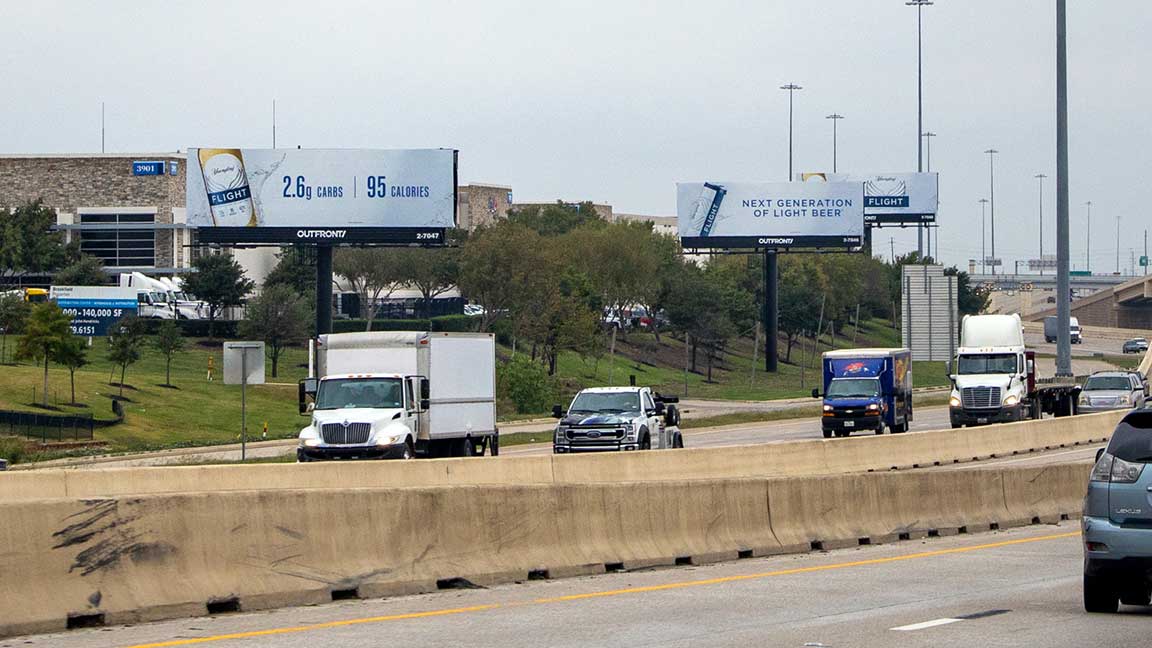
Calvin Klein pioneered the strategy of permanent billboard placements, aka perms, which are long-term exclusive deals for important assets. The brand has occupied the same wallscape in New York City since the 1990s with campaigns featuring everyone from Kate Moss to Jeremy Allen White. Sometimes the campaigns caused controversy. Always, they attracted attention and earned media. Arguably, it’s the most iconic billboard in the United States. Brands of all kinds are using perms to make a similar splash.
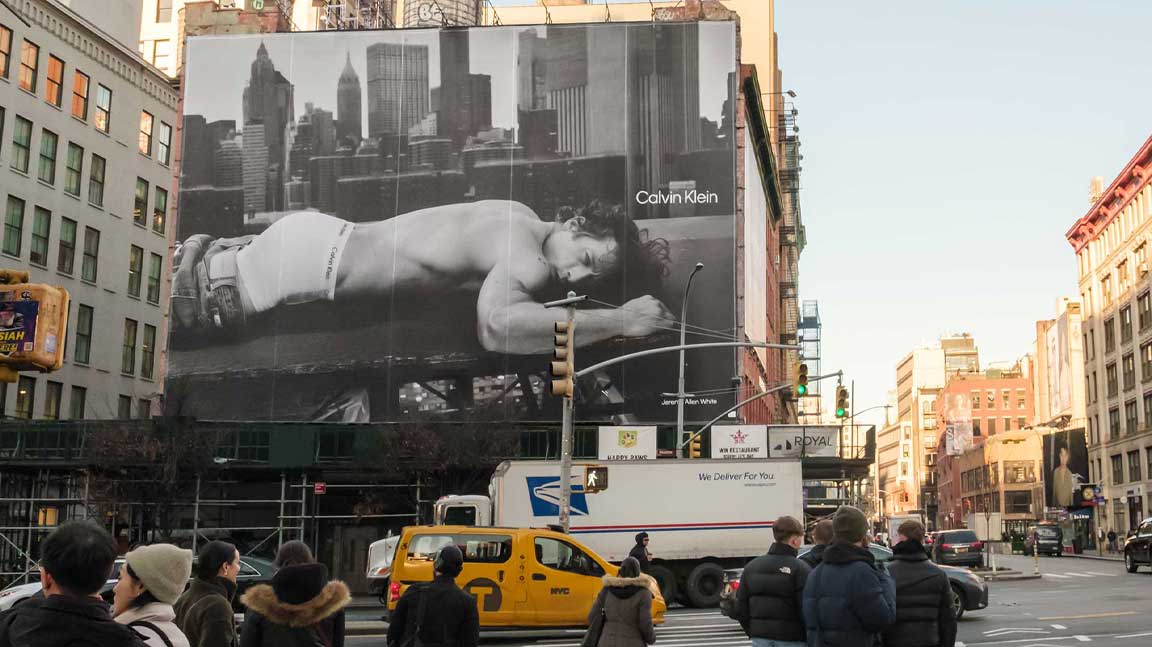
Out of home’s biggest advancement though has been the introduction of digital formats. While traditional static billboards continue to thrive, digital offers advertisers advanced capabilities, such as real-time messaging, weather triggers, and of course the ability to move with digital flexibility and agility.
The tools of out of home advertising may have changed, but the fundamentals haven’t. That’s why OOH continues to prove itself highly effective, with 9 in 10 people noticing an OOH ad in the past 30 days. It’s also well-liked, with digital out of home in particular having the highest favorability rating of any advertising channel (SOURCE: The Harris Poll).
Out of home is the oldest form of advertising; it’s still around today because it still works – some might say better than ever.
Contact us today to make your own OOH history.
Author: Sally Peay, Marketing Specialist @ OUTFRONT



